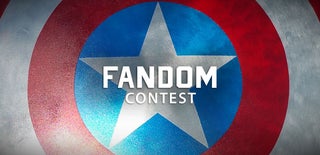Introduction: Glowing Dealthy Hallows
I've always found Tritium Lights to be fascinating and almost magical. I was intrigued if I could incorporate one into a 3D printed object. Naturally as a fan of the Harry Potter series this was an easy and straight forward project to try.
A few notes here regarding Tritium Lights, also called BETAlights. These lights use radioactive tritium in a phosphor lined tube to create a very dim but steady glow. There is a nice write up and warning on Sparkfun regarding the lights. Take a look and figure out for yourself if you want to use them.
Some of the photos used in this Instructable were taken in very dim light, including the title photo above. The Glow of the Tritium Lights is VERY dim.
Supplies
1 - Tritium light (3mm x 23mm)
Access to CAD design software (I used TinkerCAD)
Access to a 3D printer or a printing service (I used Shapeways).
Spraypaint, I used Black Semi-gloss, but the choice is up to you.
Step 1: Building the 3D Model
This step contains the gory details about how I constructed my 3D model. If you're looking to just print the model and stick a tritium light in it, you can probably skip these details. If you're new to building 3D models or want to modify the model the following might be interesting to look through.
I started by building a model of the Tritium light tube I was going to use, if you're using a different size than I did, you will have to modify the entire model.
I used the tube to start sizing up the final dimension of the 3D object. Most of the design rules for the plastic materials I use at Shapeways require 0.7mm to 1mm minimum wall widths/thickness. Based on this I ended up with a 5mm height (3mm for the tube and 1mm on each side) and a 32mm length on each of the sides of the equilateral triangle.
The first image shows the tube model and the 2nd image shows the triangle size I settled on. As a beginner with CAD I often use small blocks (shown in black) as references to verify I have the minimum thickness I need for the wall widths. The black cube here is 0.7mm on a side.
The triangle is made using a 32 mm x 32mm x 5mm block and then rotating two larger blocks +/- 60 degrees to remove material for form the triangle. This is the 3rd image.
I made a copy of the triangle and shrank it enough to provide 1mm walls and cut out the excess material on the inside of the triangle. This is the 4th image.
Thru trial and error I came up with a 17.5mm circle to fit inside my triangle. This gave enough overlap with the triangle to give support while still looking close to what I wanted. This is the 5th and 6th image.
Once I had the Triangle and the ring I needed I went back and pulled in my model for the Tritium Tube. I check and made sure everything looked right. This the 7th image.
Finally I added a small hole at the top of the object. I'm thinking of running some string thru it and hanging it from my Christmas tree next year.
Once complete, I exported this and uploaded it to Shapeways. I chose the 'White Natural Plastic' option.
Step 2: Assembly and Painting
There isn't too much to say with regard to assembly, the printed dimensions came out right on and the Tritium light slide right into the model. Depending on how your print comes out you might need to open up the hole for the light a bit or even glue it in. Make sure to paint it before using any glue.
I ended up deciding to paint with a semi-gloss black paint. I cleaned the surface lightly and just spray painted it.
Once the paint was dry I put the light back in and it was finished.
Please note as I stated in the intro, the Tritium lights are VERY dim. The cool looking photos shown here are taken in low light conditions.
Step 3: STL Formated Model
The 3D model is attached in the section

Participated in the
Fandom Contest










